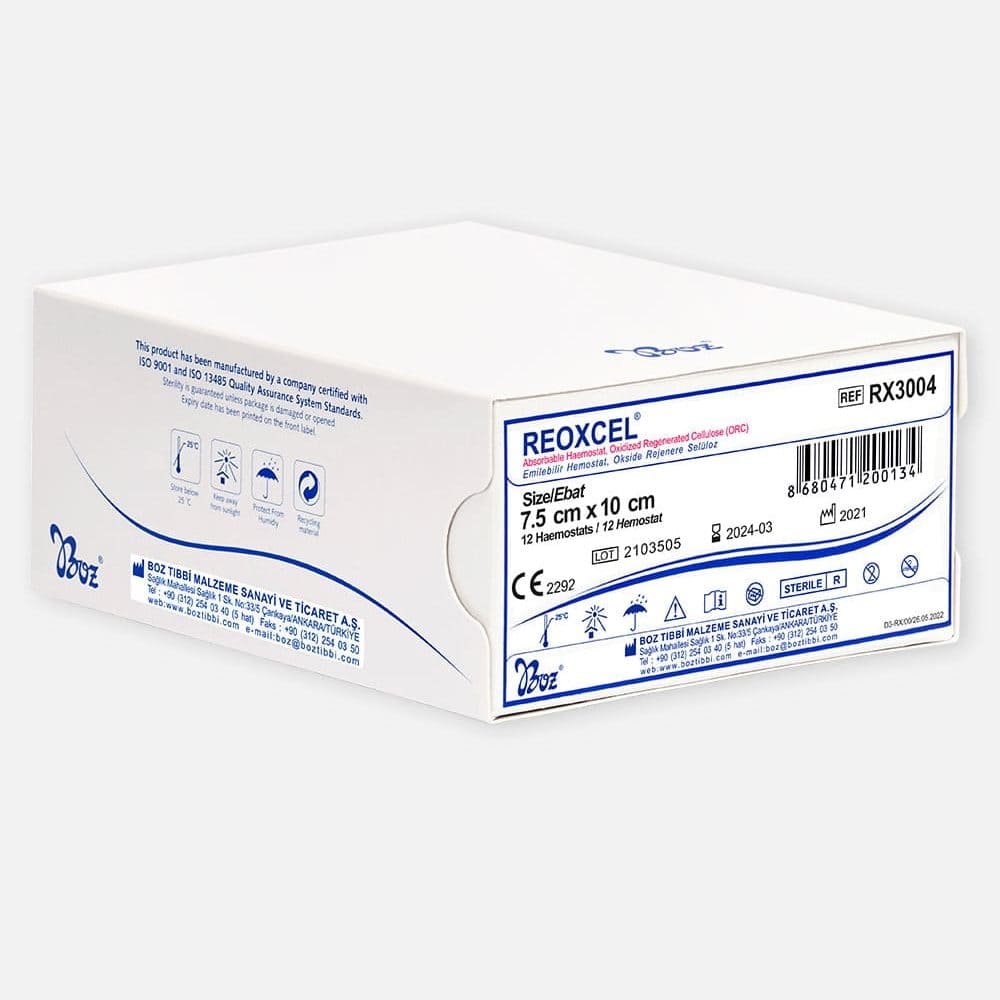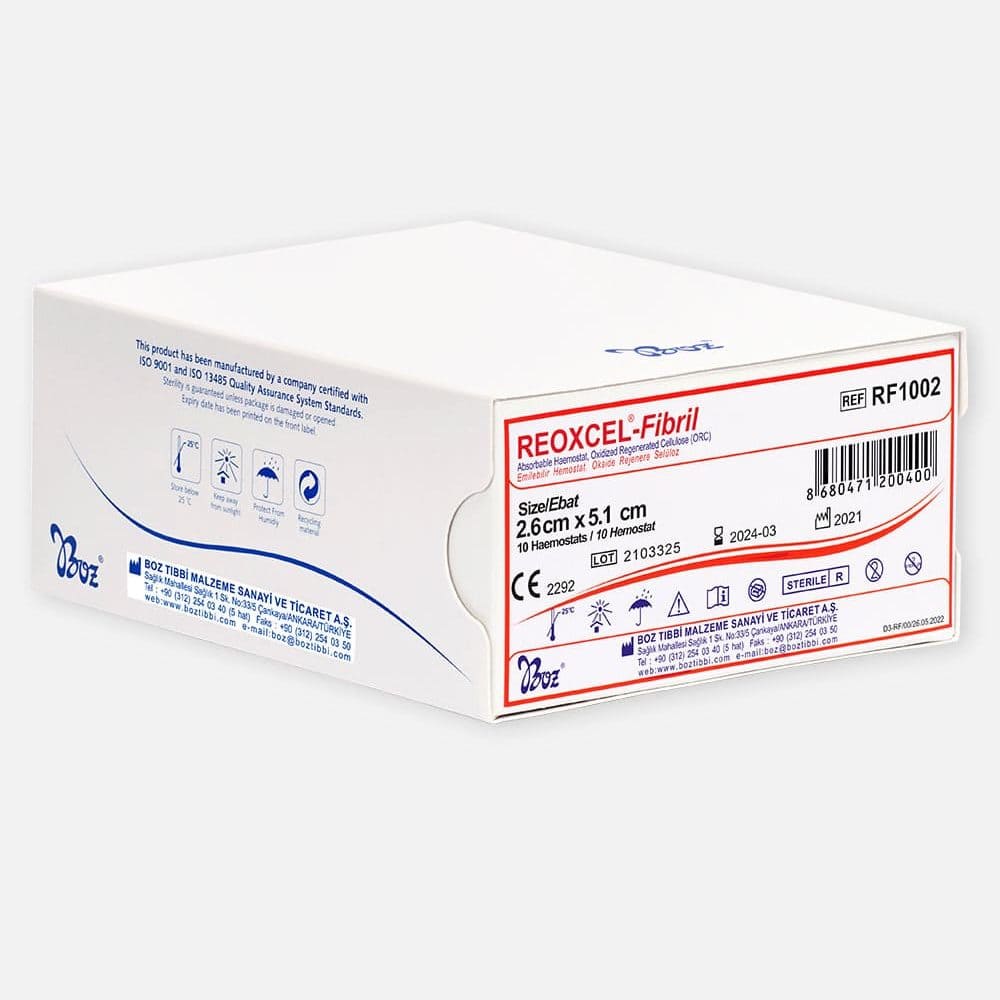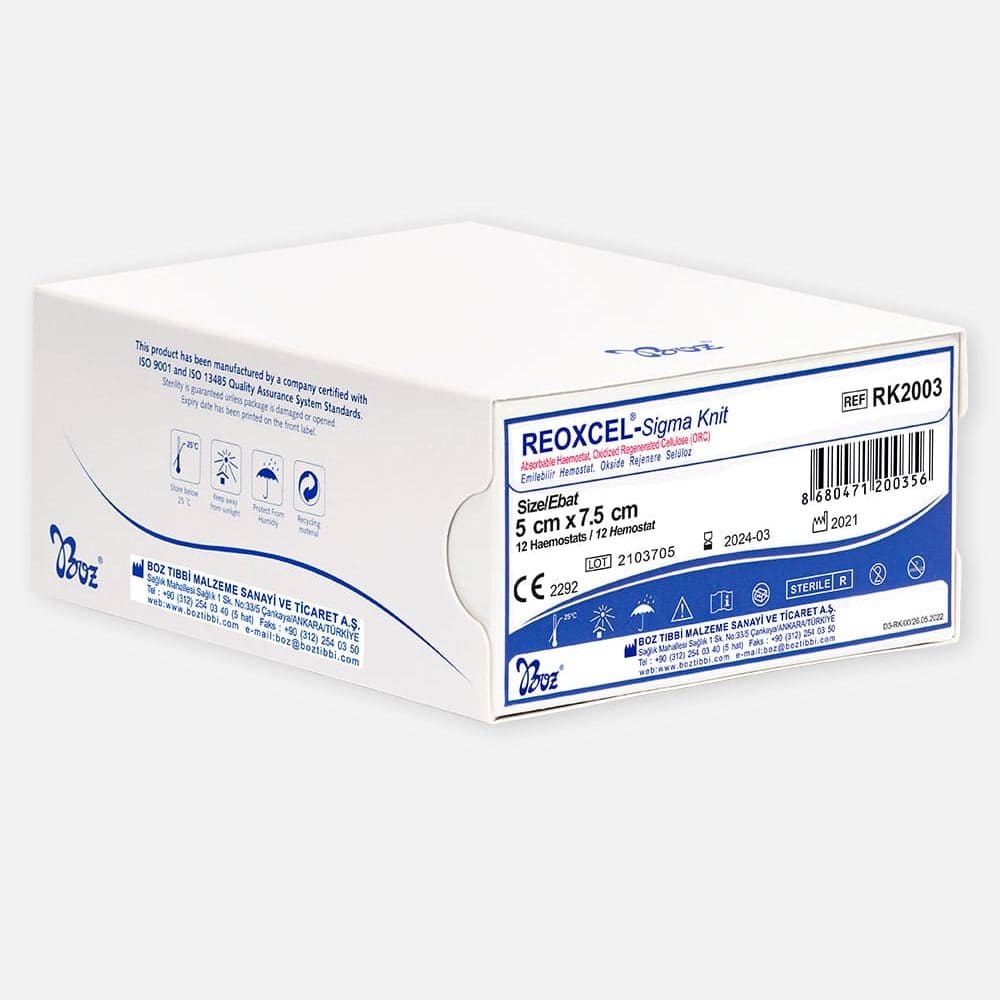Haemostasis is highly challenging for the orthopaedic surgery. To give examples, the newly cut bone in total hip and knee arthroplasty will continuously bleed and typical hemostatic methods applied on the soft tissues often do not work. Since uncontrolled bleeding can lead to neural element compaction, hemostatic principles must be strictly followed for spine surgery. Blood loss in orthopaedic surgery introduced a variable environment where hemostasis methods must handle the injury. As a result, orthopaedic tumour procedures often require blood-free areas to limit the hemostatic spread risk. For fast and effective hemostasis in orthopaedic surgery, oxidized regenerated cellulose (ORC) (polyanhydride glucuronic acid), plant-based and sterile hemostatic agents (hemostats) are preferred.
Hemostasis in Hip and Knee Arthroplasty Operations
Hip and knee arthroplasty operations are among the most common orthopaedic procedures and has unique challenges in terms of hemostasis. In general, surgeons often use an electrocautery device with cuts and connects the tissue by burning when they cut the bony surfaces. This method is resistant against various hemostatic techniques and leaves a bleeding bone edge. If precautions are not taken, these bleeding edges might lead to measured total blood loss and hidden blood loss. To control the bleeding during arthroplasty and ensure effective hemostasis bio surgical, mechanical and technical methods can be applied.
Old Method: Bone Wax as Hemostatic Agent
One of the oldest topical hemostatic agent in the orthopaedic surgery is bone wax. Bone wax which is less frequently used today, continues to be the pillar of certain pelvic approaches and spine surgery which bone bleeding is common. Bone wax is obtained from the combination of wax and petroleum gel and acts as tampon with mechanical intercalation inside bone trabecular. Currently, there are no randomized controlled studies to test the general effect of bone wax on blood loss in the spine surgery but this approach continues to be the main approach for some of the surgeons. The disadvantages of the bone wax is that it might pose a physical problem for bone healing causing pseudoarthrosis in fusion segments when used in high amounts. In addition to that, bone wax can cause allergic reaction for patients with bee allergy and has local pro-inflammatory effect.
Modern Method: Oxidized Regenerated Cellulose Use as Hemostatic Agent
Hemostasis in the spine surgery comes with unique challenges. Bone bleeding forms the significant portion of blood loss like in arthroplasty. But unlike arthroplasty, the surgeon must always pay attention to the closeness of the neural elements in the surgical area. Post-op harmotomes might lead to neurologic complications. Neural elements often prevent using certain technologies such as bipolar sealers but these challenges also encouraged innovation. For fast and effective hemostasis in spine surgery, oxidized regenerated cellulose (ORC) (polyanhydride glucuronic acid), plant-based and sterile hemostatic agents (hemostats) are preferred.
Reoxcel Hemostat Usage in Orthopaedics Surgery
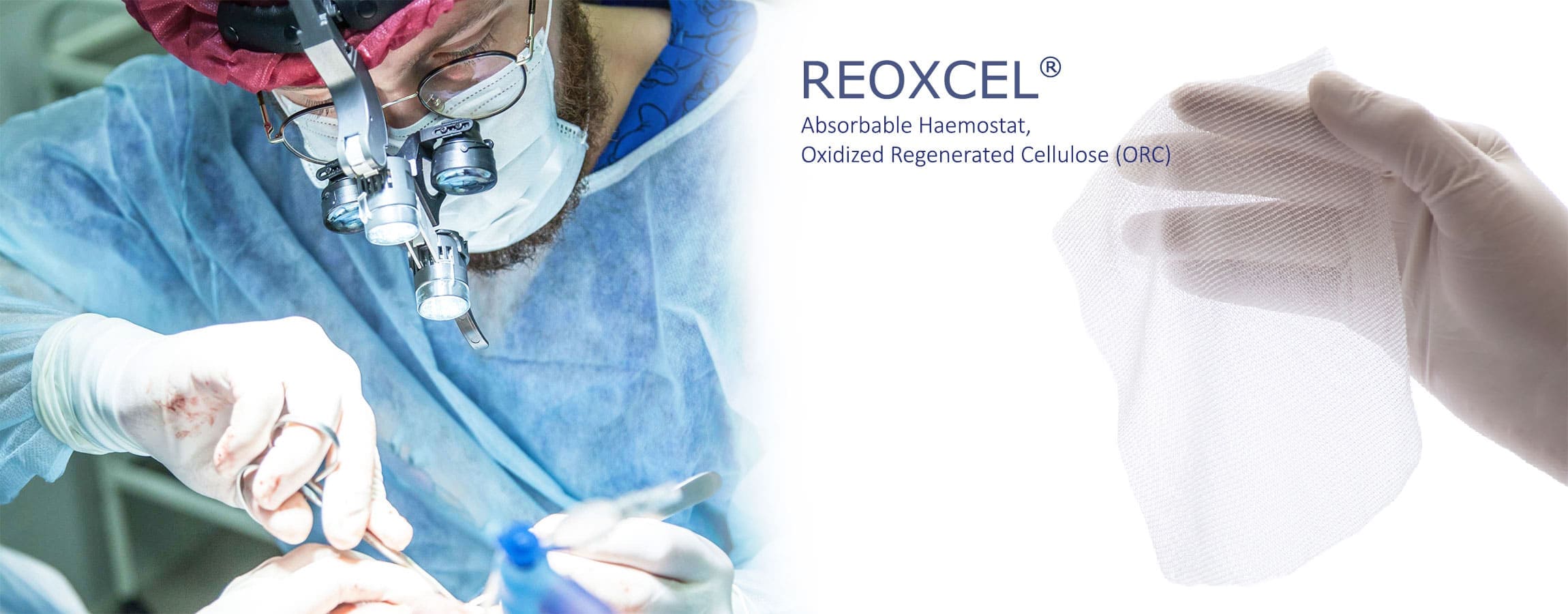
Since its raw material is plant-based, Reoxcel absorbable hemorrhage stoppers, which do not cause a reaction in the bleeding area, that is, have a bactericidal effect, provide versatile use as well as being antibacterial. Reoxcel hemostats, which provide rapid hemostasis by coagulating the blood in 3-4 minutes, are completely absorbed by the body within 7 to 14 days and disappear. It provides ease of use to hard-to-reach areas by rolling up according to the severity of bleeding and the area where it occurs, applied in thin layers, as hazelnut tampons, pinches or pads.
Since its raw material is plant-based, Reoxcel absorbable hemorrhage stoppers, which do not cause a reaction in the bleeding area, that is, have a bactericidal effect, provide versatile use as well as being antibacterial. Reoxcel hemostats, which provide rapid hemostasis by coagulating the blood in 3-4 minutes, are completely absorbed by the body within 7 to 14 days and disappear. It provides ease of use to hard-to-reach areas by rolling up according to the severity of bleeding and the area where it occurs, applied in thin layers, as hazelnut tampons, pinches or pads.
Reoxcel Fibril Hemostat Usage in Orthopaedics Surgery
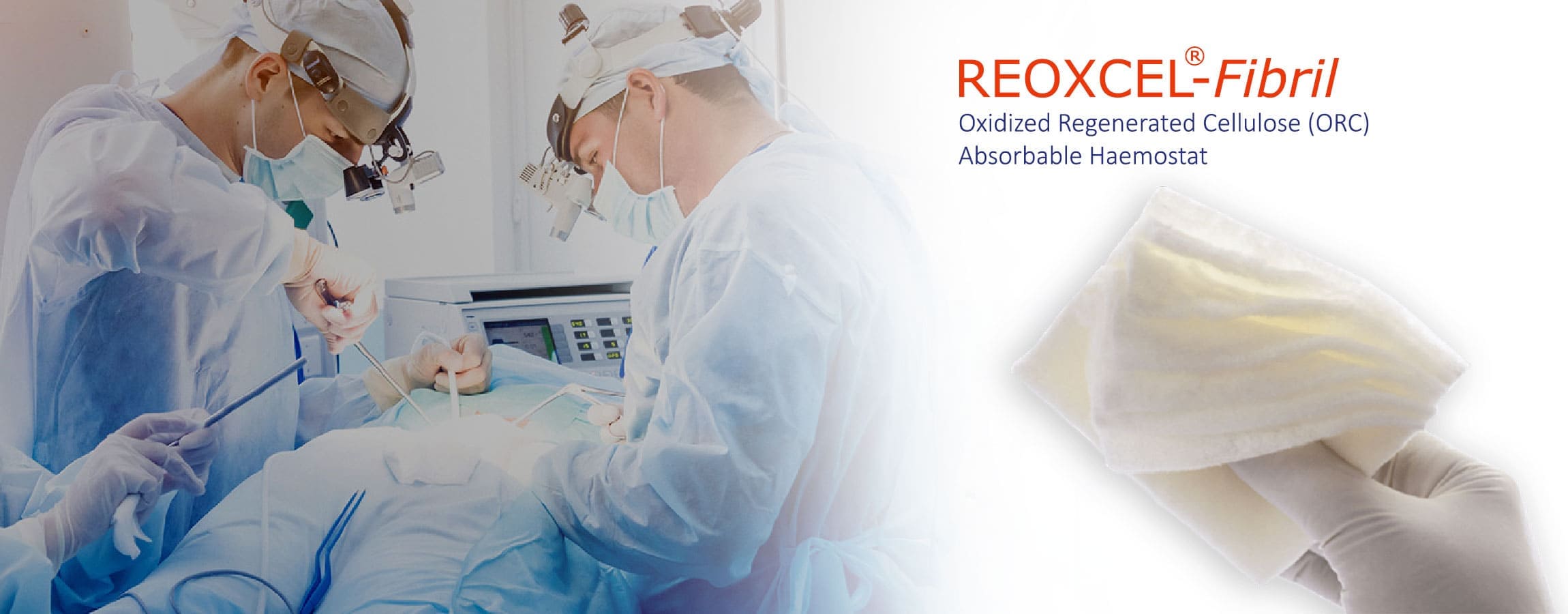
Reoxcel Fibril absorbable hemostatic agents functions the same Reoxcel product mentioned in the previous section, but offer distinct advantages which is the fibrillar version of oxidized regenerated cellulose and it is a topical absorbable hemostat. Multi-layer hemostats, which provide superior adaptation to the bleeding tissue and ease of use and access to hard-to-reach areas due to their 7 layers, provide rapid hemostasis by providing better control of bleeding in heavy bleedings that occur in operations performed in orthopaedic surgery. 7-layered Reoxcel Fibril hemostats are suitable for electrocautery use and the cautery can be easily used across the layers.
Reoxcel Fibril, a multilayer hemorrhage suitable for use in neuro- and mid-spine operations, is the right choice for laminectomy operations. Multi-layered Reoxcel Fibril, which can be used to stop bleeding in epidural grooves and hard-to-reach areas, can be separated or cut into the desired size or rolled into a hazelnut shape. It can be used in small quantities without sticking to instruments to help control bleeding quickly.
Reoxcel Fibril absorbable hemostatic agents functions the same Reoxcel product mentioned in the previous section, but offer distinct advantages which is the fibrillar version of oxidized regenerated cellulose and it is a topical absorbable hemostat. Multi-layer hemostats, which provide superior adaptation to the bleeding tissue and ease of use and access to hard-to-reach areas due to their 7 layers, provide rapid hemostasis by providing better control of bleeding in heavy bleedings that occur in operations performed in orthopaedic surgery. 7-layered Reoxcel Fibril hemostats are suitable for electrocautery use and the cautery can be easily used across the layers.
Reoxcel Fibril, a multilayer hemorrhage suitable for use in neuro- and mid-spine operations, is the right choice for laminectomy operations. Multi-layered Reoxcel Fibril, which can be used to stop bleeding in epidural grooves and hard-to-reach areas, can be separated or cut into the desired size or rolled into a hazelnut shape. It can be used in small quantities without sticking to instruments to help control bleeding quickly.
Reoxcel Sigma-Knit Hemostat Usage in Orthopaedics Surgery
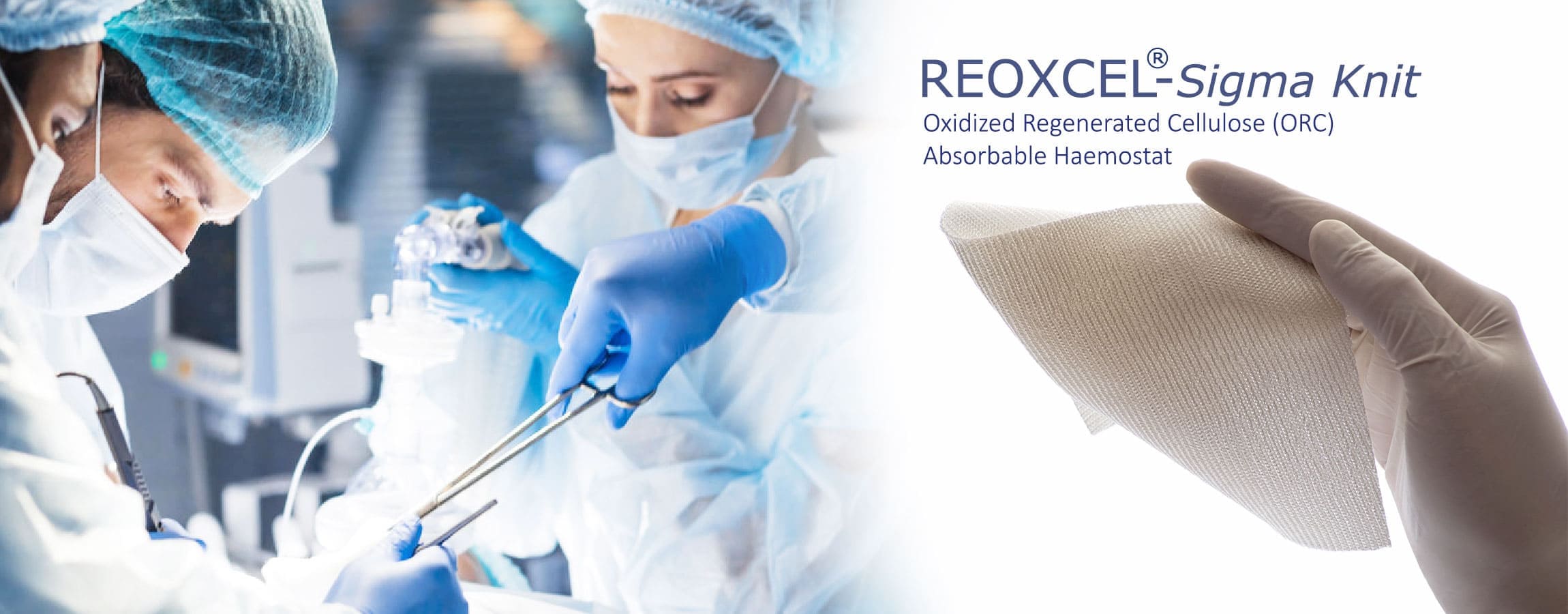
Reoxcel Sigma-Knit absorbable hemostatic agent, which provides excellent efficacy and coverage for heavy bleeding, provides high tensile strength in case of heavy bleeding thanks to its dense knit material. Reoxcel Sigma-Knit hemostat provides effective and fast hemostasis for intense bleeding due to 2-3 times thicker and denser structure than standard Reoxcel hemostat products and it has thick knit structure designed to stay intact during surgical operations. Additionally, it has foldable knit structure for suturing and placing on sensitive tissues.
Versatile, absorbable Reoxcel Sigma-Knit hemostats are ideal for use in trauma, laparoscopic surgery and a variety of procedures including sternotomy. It can be rolled and applied without additional device for endoscopic procedures. Reoxcel Sigma-Knit hemostats, which are optimal to control sternum bleeding and provide excellent efficacy and coverage, provide excellent protection with minimum time and effort in areas with heavier bleeding. Reoxcel Sigma-Knit with a thick weave provides fast and effective hemostasis by coagulating the blood in 3-4 minutes, and is completely absorbed by the body within 7-14 days.
Reoxcel Sigma-Knit absorbable hemostatic agent, which provides excellent efficacy and coverage for heavy bleeding, provides high tensile strength in case of heavy bleeding thanks to its dense knit material. Reoxcel Sigma-Knit hemostat provides effective and fast hemostasis for intense bleeding due to 2-3 times thicker and denser structure than standard Reoxcel hemostat products and it has thick knit structure designed to stay intact during surgical operations. Additionally, it has foldable knit structure for suturing and placing on sensitive tissues.
Versatile, absorbable Reoxcel Sigma-Knit hemostats are ideal for use in trauma, laparoscopic surgery and a variety of procedures including sternotomy. It can be rolled and applied without additional device for endoscopic procedures. Reoxcel Sigma-Knit hemostats, which are optimal to control sternum bleeding and provide excellent efficacy and coverage, provide excellent protection with minimum time and effort in areas with heavier bleeding. Reoxcel Sigma-Knit with a thick weave provides fast and effective hemostasis by coagulating the blood in 3-4 minutes, and is completely absorbed by the body within 7-14 days.
